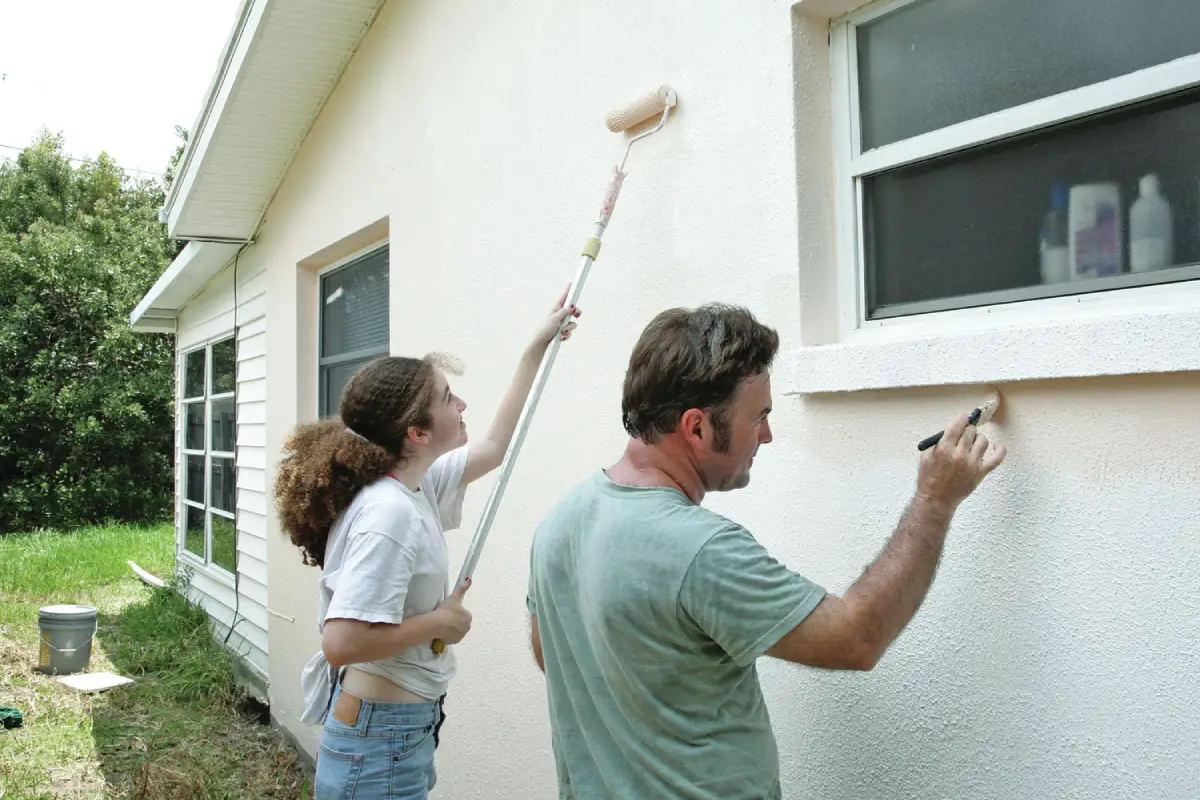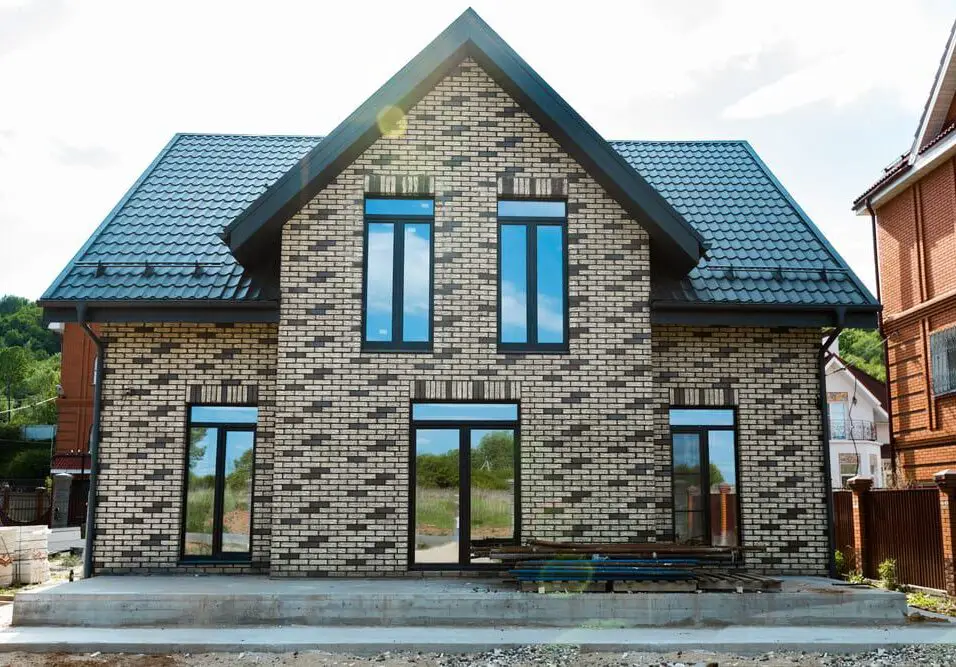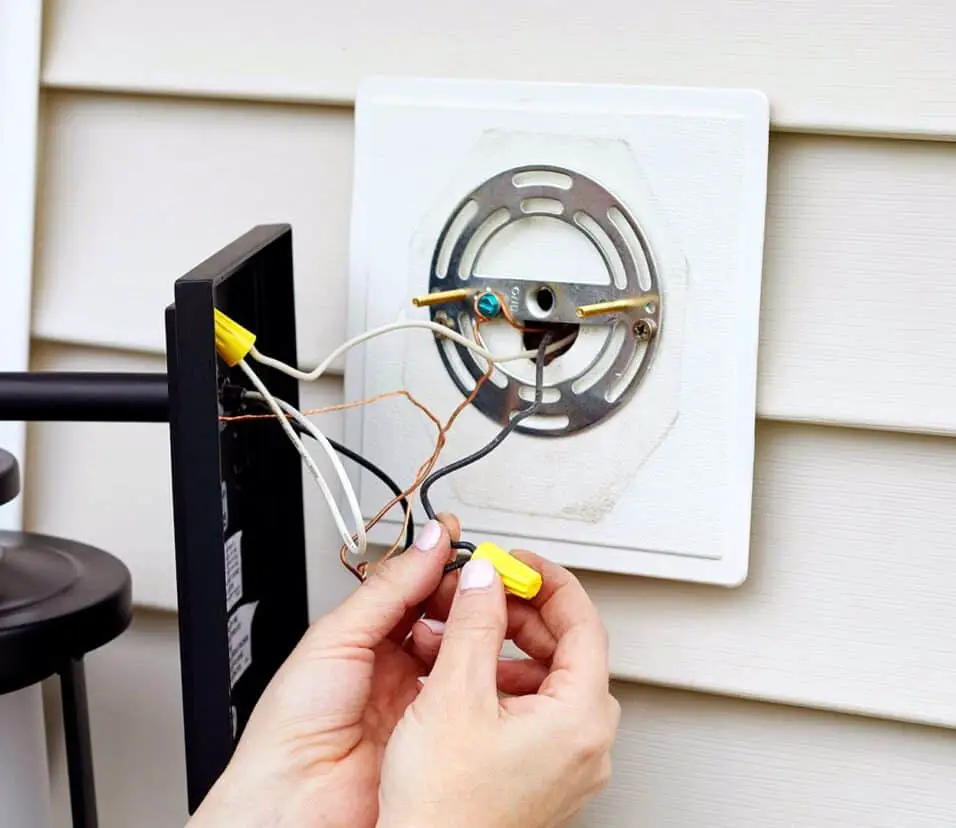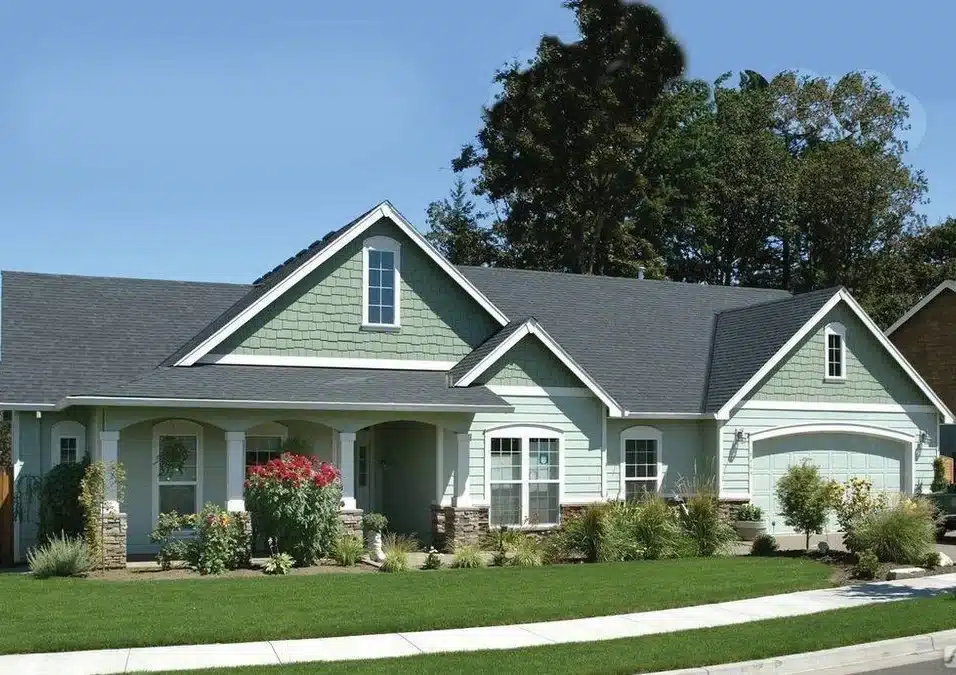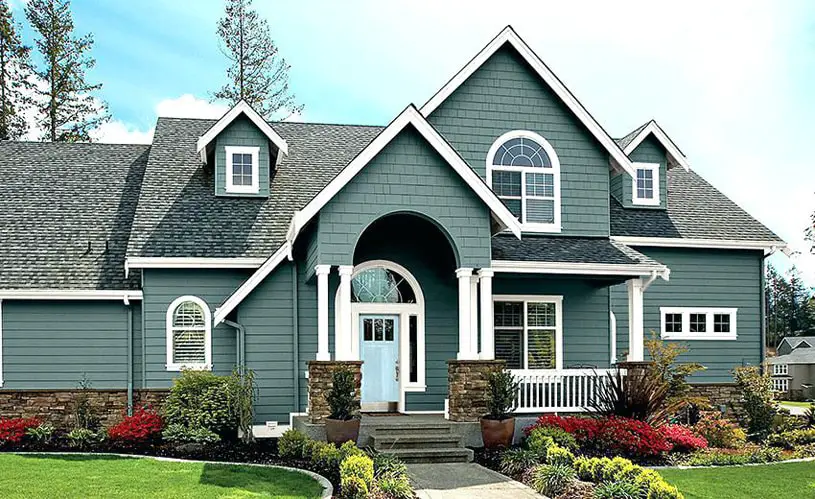How Long Does It Take Exterior Paint To Cure
Introduction
How Long Does It Take Exterior Paint To Cure: “How long does it take for exterior paint to cure?” Painting the exterior of your home is not only a transformative aesthetic endeavor but also a protective measure that safeguards your property from the elements. While selecting the right paint color and applying it skillfully are important, understanding the intricate process of paint curing is equally vital for achieving a lasting and impressive finish.
In this guide, we delve into the fascinating world of exterior paint curing, breaking down the science behind it and exploring the various factors that influence the timeline. From the type of paint you use to the environmental conditions during and after application, each aspect plays a role in determining how long the paint takes to cure fully. We’ll unravel the complexities of humidity, temperature, paint composition, and even application techniques, providing you with a comprehensive understanding of the entire curing process.
Whether you’re a seasoned DIY enthusiast, a homeowner considering a fresh exterior coat, or simply curious about the science of paints, this guide is tailored to enrich your knowledge. By the time you’ve finished reading, you’ll be equipped with the insights needed to ensure that your exterior paint not only dries but cures effectively, resulting in a stunning, long-lasting finish that enhances your home’s curb appeal and stands the test of time.
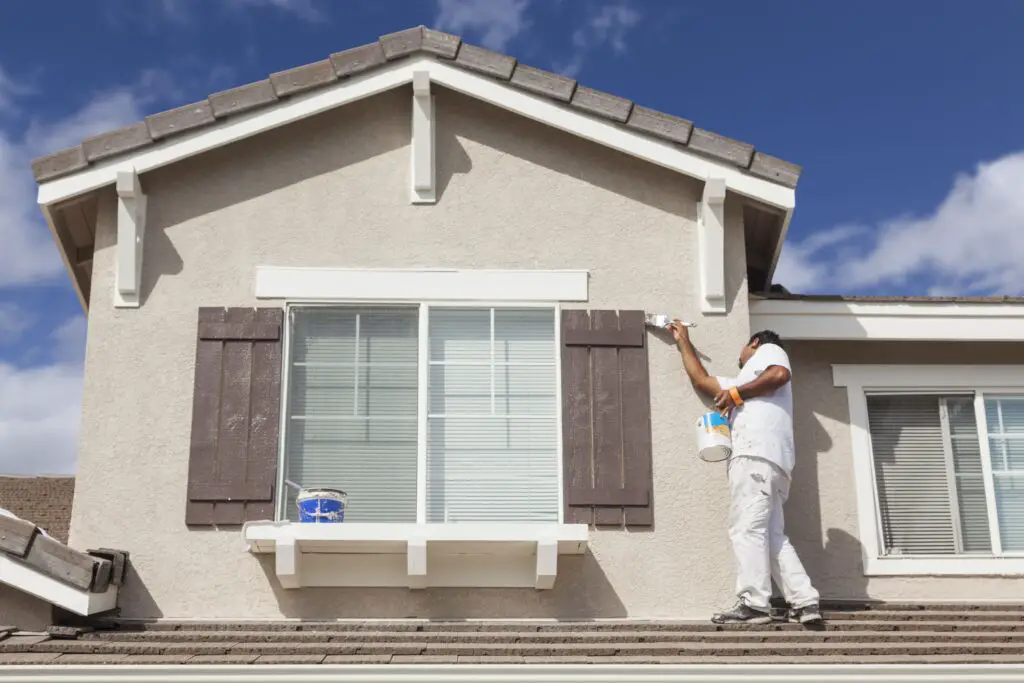
How can I make my exterior paint cure faster?
Temperature, humidity and airflow are the three main components that affect the dry time of paint. Regulate all three by opening the windows in the area you’re painting—just make sure the air outside isn’t more humid than the air inside. Try to choose the warmest, driest day of the week to tackle your painting project.
While you can’t drastically speed up the curing process of exterior paint, there are a few steps you can take to help it cure more efficiently:
- Optimal Conditions: Ensure that you’re painting in conditions that are within the manufacturer’s recommended temperature and humidity range. Warmer temperatures generally promote faster curing.
- Ventilation: Proper ventilation can help accelerate the curing process by allowing solvents in the paint to evaporate more quickly. Ensure good airflow in the painted area by opening windows or using fans.
- Thin Coats: Applying thin, even coats of paint can help it dry and cure more evenly and quickly. Avoid applying excessively thick layers of paint.
- Use Fast-Drying Paint: Some paint formulations are designed to dry and cure more quickly than others. Consider using fast-drying or low-temperature paints if you need the paint to cure faster.
- Curing Additives: Some additives and accelerators are available that can be mixed with paint to speed up the curing process. Consult with a paint professional or read the manufacturer’s recommendations for compatible additives.
- Avoid High Humidity: High humidity levels can slow down the curing process. If possible, avoid painting on very humid days or use a dehumidifier to control indoor humidity levels.
How do you know if paint is cured?
To test if your paint has fully cured, press your fingernail or a knife gently onto the coating. If it leaves an indent, then you know that your paint is not fully cured. If, however, there is no indent and the surface remains hard, then you can be confident that your paint has cured.
Knowing if paint is cured involves assessing its hardness, dryness, and odor. Here’s how to tell if paint has cured:
- Hardness: Cured paint feels hard and solid to the touch. It should no longer feel tacky or sticky when pressed gently with a finger. You can usually test this in an inconspicuous area.
- Dryness: Cured paint is completely dry throughout, not just on the surface. When paint is dry, it doesn’t transfer to your fingers or leave smudges when lightly touched.
- Odor: Wet paint has a distinct chemical odor. As it cures, the smell gradually dissipates. Cured paint should have little to no detectable odor.
- Time: Paint curing times vary depending on the type and brand of paint, temperature, humidity, and thickness of the application. It can take anywhere from a few days to several weeks for paint to fully cure.
It’s essential to wait until the paint has cured before subjecting it to cleaning, heavy use, or exposure to harsh conditions. Rushing this process can lead to damage or imperfections in the paint finish.
How long does it take for house paint to cure?
Paint doesn’t cure, or reach maximum hardness, until days after the paint is dry. How long it takes to cure depends on the type of paint: Oil-based paints – about 7 days. Latex paints – about 30 days.
The time it takes for house paint to cure varies depending on several factors, including the type of paint, environmental conditions, and the specific brand and product you’re using. However, here are some general guidelines for different stages of paint curing:
- Touch Dry: House paint is typically touch dry within a few hours after application. This means you can gently touch the painted surface without leaving fingerprints or marks.
- Recoat Time: Most house paints have a recommended recoat time, which is the minimum amount of time you should wait before applying a second coat. This can range from 2 to 24 hours or more, depending on the paint type and brand.
- Full Cure: Full curing of house paint can take much longer, often several days to a few weeks, depending on environmental conditions. During this time, the paint undergoes chemical changes, becomes harder, and reaches its maximum durability.
Several factors can influence curing times:
- Temperature: Warmer temperatures generally lead to faster curing times, while cooler temperatures slow down the curing process. Some paints are formulated for low-temperature applications and can cure more effectively in colder weather.
- Humidity: High humidity levels can slow down curing times. Adequate ventilation and dehumidification can help control humidity levels during painting.
- Paint Type: The type of paint you’re using, such as latex or oil-based, can affect curing times. Water-based latex paints typically cure faster than oil-based paints.
- Number of Coats: Each coat of paint needs to cure before applying the next. Consider the recoat time recommendations.
What happens if paint doesn’t cure?
When paint remains tacky to the touch and refuses to dry, the issue often lies with quality of the paint. But the problem may also be linked to your painting environment (in terms of humidity and temperature) or application issues like failing to prepare the surface properly or not letting the paint dry between coats.
If paint doesn’t cure properly, it can lead to various issues that affect the quality and longevity of the paint job. Here are some potential problems that can occur if paint doesn’t cure:
- Poor Adhesion: Improperly cured paint may not adhere well to the surface. This can result in peeling, blistering, or flaking of the paint.
- Soft or Sticky Surface: Paint that hasn’t cured properly can remain soft or tacky, making it susceptible to damage, scuffing, or marking.
- Durability Issues: The paint may not achieve its full hardness and durability, reducing its ability to withstand wear, abrasion, and cleaning.
- Color and Sheen Changes: Curing issues can lead to changes in the paint’s color or sheen, resulting in an uneven or inconsistent finish.
- Long-Term Damage: Over time, improperly cured paint may deteriorate, leading to the need for repainting or refinishing sooner than expected.
Proper curing is essential for achieving a durable and long-lasting paint finish. If you suspect that paint hasn’t cured correctly, consult the manufacturer’s recommendations for curing conditions or consider seeking professional advice for repair or repainting.
What happens if paint gets wet before it cures?
It is difficult to fix a painted surface that has not yet cured but that has been rained on. The water forms rivulets down the painted surface, affecting both the paint color and its texture. The best way to fix this is to wait until the paint has fully dried.
If paint gets wet before it has fully cured, it can lead to several problems, including:
- Blotching or Staining: Water or moisture can cause paint to become discolored or stained. This can result in unsightly splotches or streaks on the painted surface.
- Adhesion Issues: Wet paint is more susceptible to adhesion problems. If it becomes wet, it may not adhere properly to the surface, leading to peeling or blistering in the future.
- Softening: Moisture can soften the paint film, making it vulnerable to damage. Soft paint can be easily marked or marred by contact with objects or even by the touch of a finger.
- Bubbling: If the paint is exposed to water or moisture while it’s still wet, it can trap bubbles underneath the paint film. These bubbles can cause unevenness in the finish.
To prevent these issues, it’s crucial to protect freshly painted surfaces from moisture until the paint has fully cured. Avoid rain, splashes, and humidity during the curing period, and follow the manufacturer’s recommended drying and curing times before subjecting the painted surface to wet conditions.
How can I speed up the cure of paint?
Professional painters reveal how to make paint dry faster – without compromising on quality
- Improve the ventilation.
- Apply paint in multiple, thin coats.
- Don’t paint on wet surfaces.
- Use a water-based paint.
- Use a hair dryer.
While it’s essential to allow paint to cure properly for the best results, there are some steps you can take to help speed up the curing process:
- Optimal Conditions: Ensure that you’re painting in conditions that are within the manufacturer’s recommended temperature and humidity range. Warmer temperatures generally promote faster curing. If you’re working indoors, use heaters to raise the temperature in the room.
- Ventilation: Proper ventilation can help accelerate the curing process by allowing solvents in the paint to evaporate more quickly. Ensure good airflow in the painted area by opening windows or using fans. However, avoid drafts that may cause uneven drying.
- Thin Coats: Applying thin, even coats of paint can help it dry and cure more evenly and quickly. Avoid applying excessively thick layers of paint, as these can take much longer to cure.
- Use Fast-Drying Paint: Some paint formulations are designed to dry and cure more quickly than others. Consider using fast-drying or low-temperature paints if you need the paint to cure faster.
- Curing Additives: Some additives and accelerators are available that can be mixed with paint to speed up the curing process. Consult with a paint professional or read the manufacturer’s recommendations for compatible additives.
- Avoid High Humidity: High humidity levels can slow down the curing process. If possible, avoid painting on very humid days or use a dehumidifier to control indoor humidity levels.
Does paint look different after cure?
Paints typically dry darker, particularly oil, acrylic, and latex paints. However, that doesn’t mean it will look different than what’s on the paint swatch. If you mix the paint properly, it should look the same as the color you picked out once it dries.
Paint can undergo some changes in appearance after it has fully cured. Here are some common ways in which paint may look different after curing:
- Color Consistency: Paint often appears slightly different when wet compared to its dry, cured state. As the paint dries and cures, it may darken or lighten to achieve its final, intended color. This is especially true for some paint colors, such as certain shades of white or pastels.
- Sheen: The sheen or gloss level of paint may change slightly after curing. Some paints have a higher sheen when wet, and this may diminish as the paint dries and cures. Conversely, some paints may have a lower sheen when wet and become shinier when cured.
- Texture: The texture of the paint surface may change after curing. Wet paint may appear smoother, but as it dries and cures, it can develop a more uniform and consistent texture.
- Opacity: In some cases, paint may become more opaque as it cures. This means that the underlying surface or previous layers of paint may become less visible as the paint dries and becomes more solid.
It’s important to note that while these changes in appearance are common, they are typically subtle and not usually a cause for concern. Paint manufacturers formulate their products to achieve consistent color, sheen, and texture after curing. To ensure you achieve the desired final appearance, it’s essential to follow the manufacturer’s recommendations for paint application and drying times.
Will exterior paint dry overnight?
Oil-based paints are often dry to the touch in only about six to eight hours but, again, it is better to give it a couple of extra hours to ensure that the paint is fully dried. It is not uncommon to wait overnight for oil-based paints to dry.
The drying time for exterior paint can vary depending on several factors, including the type of paint, environmental conditions, and the specific brand and product you’re using. While exterior paint may dry to the touch relatively quickly, it typically takes longer to fully cure. Here’s what you can expect:
- Touch Dry: Exterior paint is typically touch dry within a few hours after application. This means you can gently touch the painted surface without leaving fingerprints or marks.
- Recoat Time: Most exterior paints have a recommended recoat time, which is the minimum amount of time you should wait before applying a second coat. This can range from 2 to 24 hours or more, depending on the paint type and brand.
- Full Cure: Full curing of exterior paint can take much longer, often several days to a few weeks, depending on environmental conditions. During this time, the paint undergoes chemical changes, becomes harder, and reaches its maximum durability.
Several factors can influence drying times:
- Temperature: Warmer temperatures generally lead to faster drying times, while cooler temperatures slow down the drying process. Some paints are formulated for low-temperature applications and can dry more effectively in colder weather.
- Humidity: High humidity levels can slow down drying times. Adequate ventilation and dehumidification can help control humidity levels during painting.
- Paint Type: The type of paint you’re using, such as latex or oil-based, can affect drying times. Water-based latex paints typically dry faster than oil-based paints.
- Number of Coats: Each coat of paint needs to dry before applying the next. Consider the recoat time recommendations.
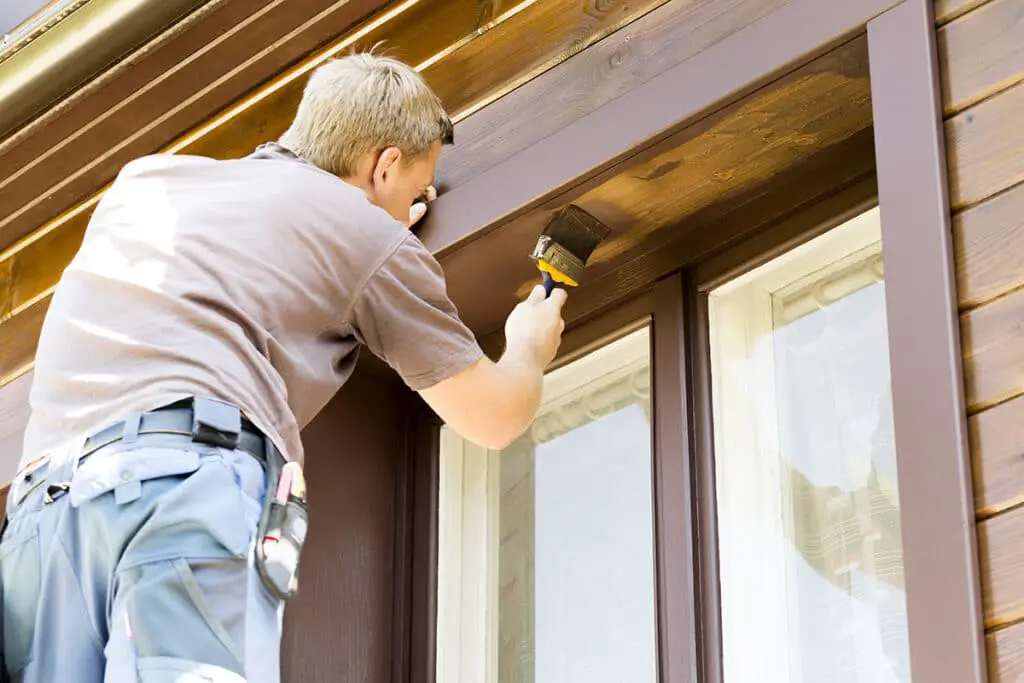
Conclusion
In the realm of exterior home improvement, the journey doesn’t conclude with the final stroke of the paintbrush. As we conclude our exploration into the question, “How long does it take for exterior paint to cure?” we’ve unveiled the intricate dance of science, patience, and precision that underlies the perfect exterior finish.
By now, it’s clear that patience is not just a virtue but a necessity when it comes to exterior paint curing. Rushing this process risks compromising the longevity and resilience of your paint job. As you stand back to admire your freshly painted exterior, remember that time is your ally. Allowing the paint to cure fully, taking into account factors like humidity, temperature, and paint type, is an investment in the future aesthetics and protection of your home.
The culmination of careful paint need selection, meticulous application, and an understanding of the curing process ensures that your home’s façade isn’t just visually appealing, but also fortified against the elements. A well-cured exterior paint job has the power to weather seasons and passing years, maintaining its vibrant charm.
So, as you watch the paint transform from wet to dry and finally to fully cured, embrace the anticipation. Know that the waiting period symbolizes more than just the passage of time; it symbolizes your dedication to the art and science of home improvement. As the days pass, your exterior evolves into a masterpiece, encapsulating the essence of your vision and the resilience of carefully chosen materials. Ultimately, the journey from paint application to full curing encapsulates the essence of dedication to your home’s beauty and integrity.



